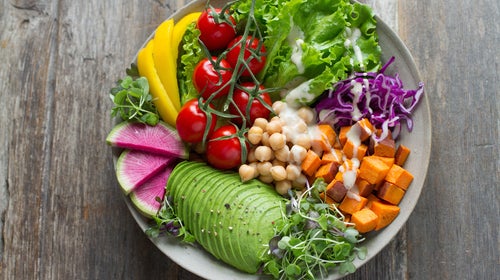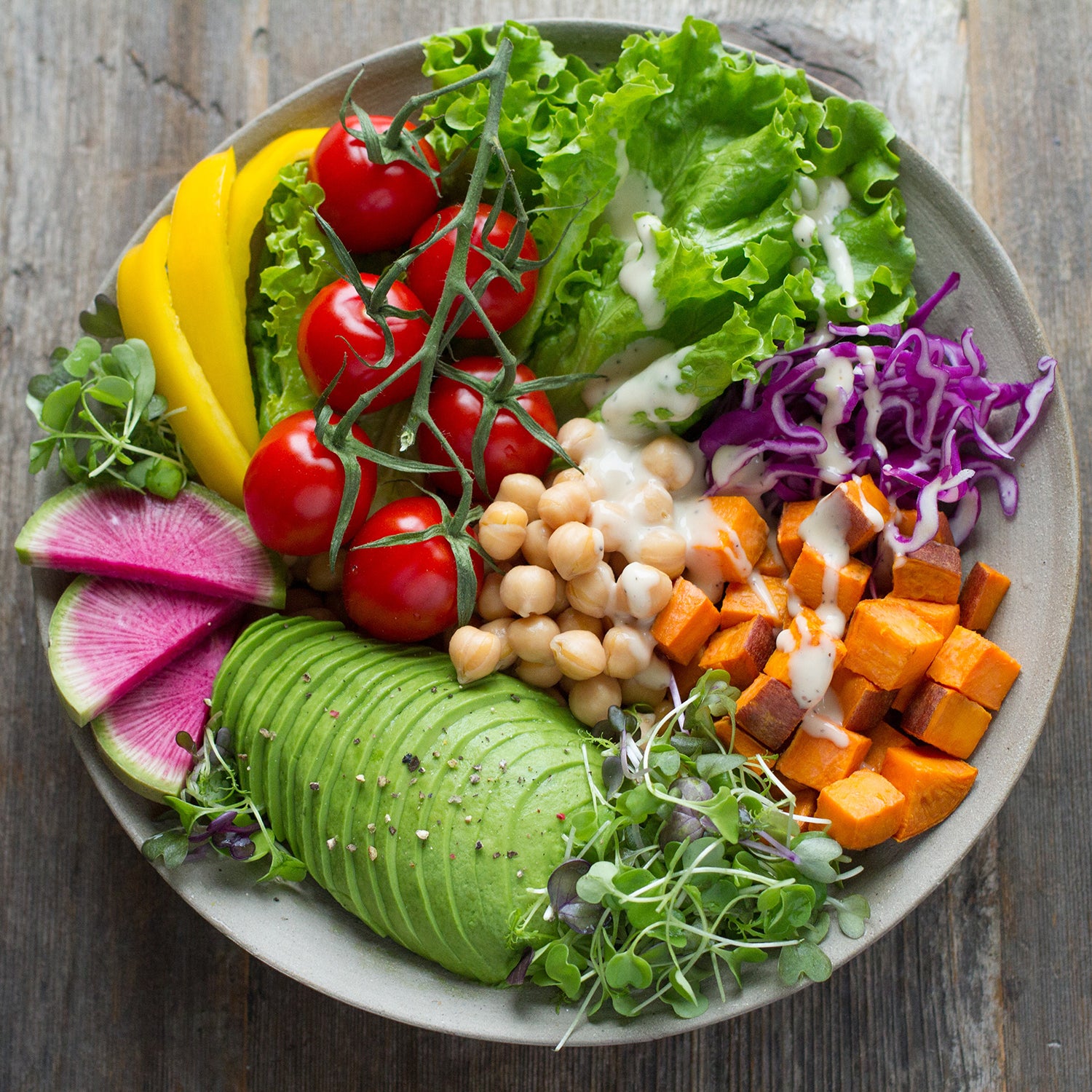In October 2017, my mother-in-law was hospitalized for a week. When she was sent home, I started cooking dinner every night for her, my father-in-law, and my wife, a routine IŌĆÖve kept up ever since. After more than three and a half years of doing this, I recently ran into a familiar problem: I got bored with the food I was cranking out. I was in a rut and needed inspiration.
I hit a wall partly because these three can be a little picky, which restricts what I can make. My wife, Susan, is a vegetarian whoŌĆÖs trying to go veganŌĆöa decision that, if it holds, will remove two staples that IŌĆÖve relied on for her, eggs and cheese. My father-in-law, whoŌĆÖs in his mid-nineties, is a healthy eaterŌĆöalmost every day he powers down a lumberjack-size breakfast of granola, yogurt, mango, and strawberriesŌĆöbut he has a sensitive stomach and canŌĆÖt touch the following: garlic, onion, brussels sprouts, broccoli, cauliflower, beans, corn, beets, bell peppers, peas, red chile, apples, pears, pickles, and chocolate. Limiting! These restrictions also rule out many prepared foods, which often contain onion powder or garlic powder (or both). My mother-in-law, also in her mid-nineties, is a native of Louisiana who used to be a first-rate cook and hostess. But sheŌĆÖs gotten more finicky as sheŌĆÖs aged, and now mostly subsists on crackers, biscuits, cheese spread, and soup.
In response to such challenges, I decided to shake things up with a move IŌĆÖve tried in the past: pick a cuisine I want to learn about and dive in. IŌĆÖve done this with southern food, New OrleansŌĆōstyle seafood, southwestern food, Italian food, and baking and grilling in general, and I decided that my choice this time would beŌĆöta-daŌĆövegetarian food.
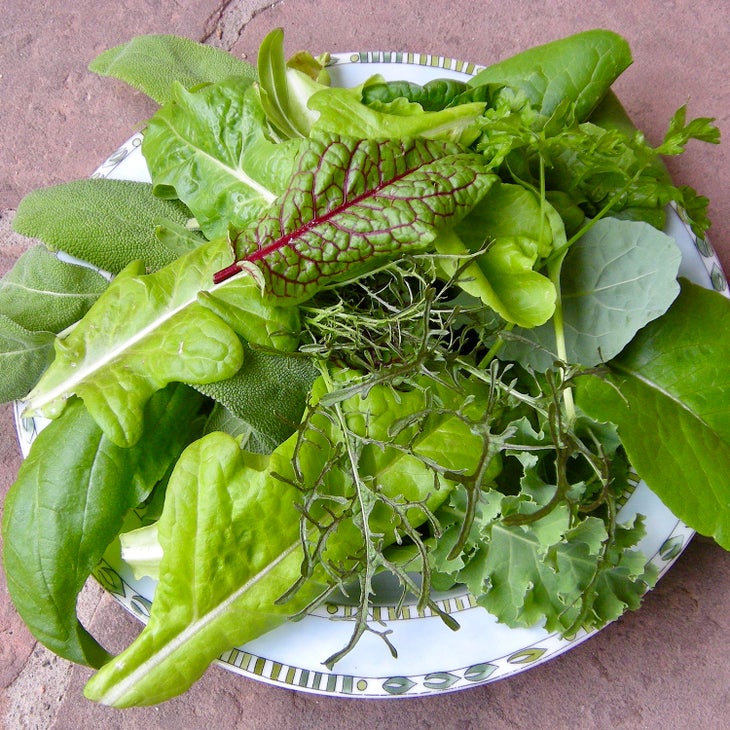
This does not mean that, up until now, I didnŌĆÖt know how to buy and cook vegetables. I started learning to cook right out of college, when I lived in a with other young people who were always semi-broke, so we ate a lot of beans, lentils, rice, potatoes, and noodles. The roundup of dishes IŌĆÖve been cooking for my family members was already pretty veg heavy, but when I looked at my recipe collection, I realized it was short on what I would call main eventsŌĆöentr├®es that take the place of the animal protein that most of us are accustomed to seeing on our plates.
To get started on the hunt for new recipes, I drew on a DIY instructional method that I developed when I was a teenager and decided to start playing golf. Basically, you line up the exact things you need to get goingŌĆölike clubs, shoes, and a book that offers A-to-Z instructionŌĆöand then you obsess on learning, ignoring everything else in the world until you achieve some level of proficiency.
As it happens, the decision to step up my vegetarian game dovetailed nicely with the fact that, during the pandemic, my main form of relaxation has been vegetable gardening, so I was already following a natural path. The next step was to assemble a solid collection of resources, ones that combine people and tools that are familiar to meŌĆölike the work of Santa FeŌĆōbased vegetarian expert ŌĆöand some new ones, including the current revolution in home hydroponic gardening. I also spent hours reading the all-about-salad Substack created by my friend Emily Nunn, along with the wonderful recipe collection curated by the good people at , an online publication thatŌĆÖs owned by the same company that now owns ╣·▓·│į╣Ž║┌┴Ž.
On the food-production front, the big headline for 2021 is that I now have year-round access to fresh greens, thanks to a hobby that entered my life last summer: hydroponics. One of my ╣·▓·│į╣Ž║┌┴Ž buddies, Mary Turner, told me she was being sent an elaborate hydroponics rig made by a Los AngelesŌĆōbased company called Lettuce Grow. Would I be interested in learning how to use it? Yes, I was, and I think itŌĆÖs safe to say I became obsessed with the thing.
The device is called the Farmstand, and as you can see on the Lettuce Grow , it looks like a UFO. Once youŌĆÖve assembled it, you fill the big bulb-shaped tank at the bottom with 20.5 gallons of water, then you mix in two types of fertilizer sold by the company.
At the bottom of the tank thereŌĆÖs a small pump, the kind used in garden fountains. Cued by an external timer, the pump periodically sends the fertilizing juice up through a six-foot length of pipe. Once the liquid reaches the top, it hits a diffuser that causes the fluid to splash down, creating an internal shower.
The holes you see in the upper sections hold plant cups that cradle seedlings grown and sold by the company, and its┬Ā offers a ravishing array of selections. In the summer of 2020, I got started lateŌĆöearly AugustŌĆöso there wasnŌĆÖt enough time to attempt vegetables like squash, zucchini, or tomatoes (all of which I grow in my backyard during summer months). But I did plant an amazing number of greens, including about a dozen different types of lettuce, kale, rainbow Swiss chard, bok choy, tatsoi, arugula, sorrel, basil, cilantro, parsley, and thyme.
Growth happens fast: the seedlings I started with, which were roughly three inches tall when I installed them, grew into harvestable plants just four weeks later. Everything kept going strong until frost arrived in October. Then I moved the tower indoors and started over with new plants and a set of grow lights. In January, I was taking home enough fresh greens every day for three people.
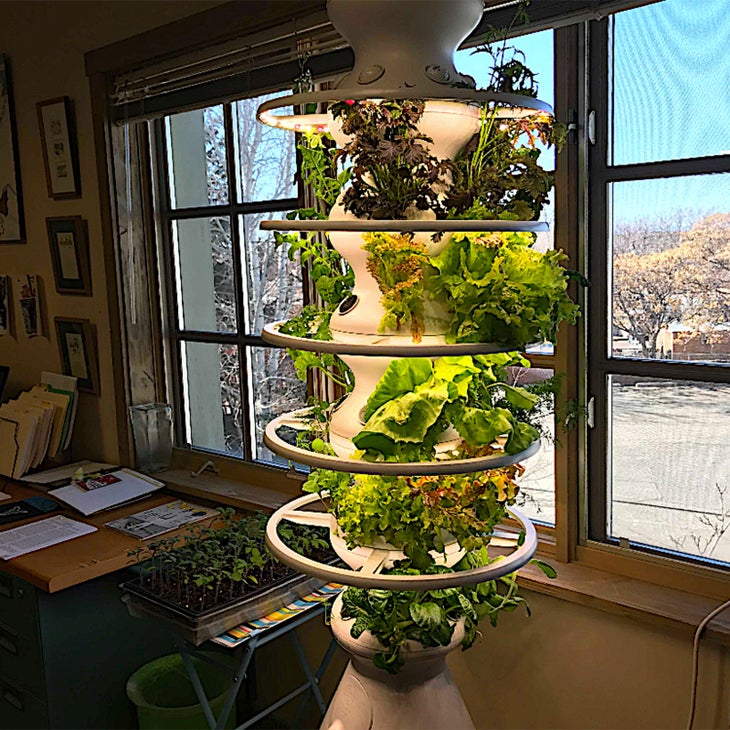
IŌĆÖve also been testing a spiffy system made by a company based in Skokie, Illinois, called . Its design looks like a bookshelf; it fits neatly against a wall, where it quietly does its thing. In this system, the plants are installed atop deep trays that contain fertilized liquid thatŌĆÖs kept moving by a pump. You can sync the whole thing to your mobile phone, setting a timer that, for example, tells the device when to turn its grow lights off and on.
One nice thing about both systems is the way you harvest. You donŌĆÖt have to cut an entire head of lettuce all at once; instead, you can take a few leaves at a time, and the plant will continue to thrive and produce new leaves. So? Well, this means you can put together a big saladŌĆöevery dayŌĆöthat contains a dozen or more different greens, and you can do this for months. To me it felt like a revolution, and it quickly redefined what I was serving at dinnertime. Salad became a main event rather than an afterthought.
As I knew from my earlier self-instruction sagas with food, the key to getting better at vegetarian cooking is to take it one recipe at a time, keeping careful track of what IŌĆÖve made and any variations I tried. I put every recipe I consider a keeper into a big, heavy-duty binder thatŌĆÖs sectioned off with labels like ŌĆ£Egg Dishes and BreadsŌĆØ and ŌĆ£Stuffing, Biscuits, and Sandwiches.ŌĆØ My ŌĆ£VegetarianŌĆØ section isnŌĆÖt empty, of course, but it is a little thin. ThatŌĆÖs about to change.
One go-to source is an old standby with 1,400 recipes in it, Deborah MadisonŌĆÖs , first published in 1997. Earlier this year, I read MadisonŌĆÖs memoir┬Ā, a beautifully written account of how she went from being a full-time Zen student in San Francisco to becoming one of the founding talents behind Greens, the groundbreaking vegetarian restaurant in the Marina District. Madison had been cooking meals for years at the San Francisco Zen CenterŌĆöa huge job, more like running a dining hall than a restaurantŌĆöand she had worked at Chez Panisse, Alice WatersŌĆÖs famous farm-to-table restaurant in nearby Berkeley. After her first trip to France in the late 1970s, she came home and heard that the Zen Center was planning to open a restaurant called Greens, which it did in the summer of 1979, and that she would be tapped as head chef.
In the early days of this job, Madison grappled with something I mentioned earlier: when youŌĆÖre used to eating traditional American dinnersŌĆöfeaturing a main course that usually involves beef, pork, chicken, or fishŌĆöthe absence of this element can stand out. ŌĆ£I tried to imagine some tired man dully anticipating a plate with a big hole in the middle where the meat would have been,ŌĆØ she wrote in her memoir. She knew that vegetarian entr├®es had to ŌĆ£proclaim without wavering, ŌĆśHere I am! IŌĆÖm whatŌĆÖs for dinner! No need to look elsewhere!ŌĆÖŌĆØ
Madison offers a lot of main events in her cookbook. One I make regularly is the timbale, which she describes as ŌĆ£vegetable and herb-saturated custards paired with sauces.ŌĆØ I make one of hers called zucchini timbales with red pepper sauce, using for New Mexico red chile sauce as a substitute for the sauce she describes, which relies on red bell peppers.
In addition, I frequently consult my favorite recipe Substack, Emily NunnŌĆÖs a hilarious and highly informative roller-coaster ride in which Nunn, a veteran food writer whoŌĆÖs worked for The New Yorker and the Chicago Tribune, shares her obsessive quest to find the best recipes for any kind of salad you can imagine. Not everything on the site is vegetarianŌĆöone recent dispatch focused on tuna saladsŌĆöbut much of it is. Her style has a way of making you hungry for all of it. IŌĆÖve never particularly liked fruit salads, but after reading her recent on the subject, I want to try some. I asked her to send me a salad recipe that seems just right for summer, and she shared that features fennel and mangoes.
Finally, IŌĆÖll rely on the invaluable maintained by Vegetarian Times, a trove of roughly 5,700 recipes that dates back to 2007. Brittany Martin, who edits it, says sheŌĆÖs assigning new recipes all the time, so the offerings will continue to grow. When you look at the history of Vegetarian TimesŌĆöwhich started in 1974 as a print publication and only transitioned to a web-only magazine in 2017ŌĆöitŌĆÖs clear that weŌĆÖre lucky to have as many of these creations as we do.
Founded in Oak Park, Illinois, by a nurse named Paul Obis, whoŌĆÖs now deceased, Vegetarian Times grew into a web magazine that, over the decades, changed hands many times, which can be a formula for everything getting lost. That didnŌĆÖt happen, fortunately, and what remains on the site is exactly what I need: a searchable database that allows me to enter whatever vegetable I feel like cooking and then get a long list of ideas for using it. During one recent week, I made something new from the Vegetarian Times files four nights in a row, and the experience was really fun.
As I usually do, I introduced variations to the recipes that were based on the dietary restrictions of my family members and on the ingredients I happened to have. With the first dish I made, , that meant omitting onion and garlic and using New Mexico red chile powder instead of ancho chile powder, bar chocolate instead of cocoa, and corn tortillas instead of flour. I suspect that some purists will find this mole sauce too simpleŌĆörecipes for mole usually contain several different types of chilesŌĆöbut for a quick weeknight meal, it worked great. I served it with lettuce from the Farmstand, along with three different store-bought vegetables.
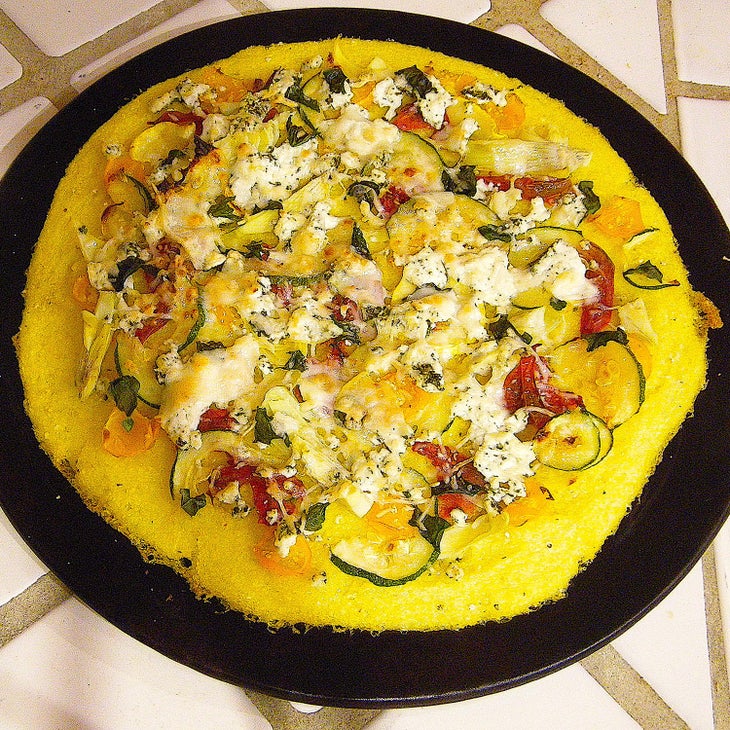
On other nights I tried recipes for , , and . The pizza was the hit of the week. I used a good brand of coarse polenta and spread the crust on an oiled pizza stone before putting it in the oven to cook and firm up. I skipped the red sauceŌĆöSusan and my father-in-law generally donŌĆÖt like itŌĆökept the goat cheese, and layered on thin-sliced tomatoes, shredded artichoke hearts, Parmesan cheese, fresh basil, and dried oregano. It was terrific, as was the eggplant dish.
On the fifth night, I made something that I developed myself, stuffed with a mix of butternut squash, toasted pumpkin seeds, Parmesan, shredded cheese, green chile, and cumin. Of the four dishes I made that week, the only one that wonŌĆÖt go into my binder is the white-bean mix. I liked it a lot, but Susan was more meh about it, and she reminded me that she and I once invented a smooth white-bean spread thatŌĆÖs at least equal to this. And yes, that recipe is in the binder.
Anyway, the batting average for this initial period of testing was high: .750! I know IŌĆÖll discover a lot of other winners as I work through more of the collection. This feels like the start of an endless plant-based feast.
HeardŌĆÖs Cannellini Bean and Green Olive Tapenade
- 30 ounces cooked and drained cannellini beans (or two 15-ounce cans)
- 1 cup pitted green olives, coarsely chopped
- 4 tablespoons chopped parsley
- 4 tablespoons olive oil
- 2 teaspoons lemon zest
- 2 teaspoons crushed red pepper flakes
- Juice from 2 lemons
- Salt and pepper
- 2 teaspoons cumin
- 2 teaspoons coriander
- 1 teaspoons curry powder
Put everything into a food processor and pulse until smooth. This spread is great on crackers, celery, and toast.
Vegetarian Times is part of ╣·▓·│į╣Ž║┌┴Ž Inc., the same company that owns ╣·▓·│į╣Ž║┌┴Ž magazine and ╣·▓·│į╣Ž║┌┴Ž Online. If you join the ╣·▓·│į╣Ž║┌┴Ž+ membership program, youŌĆÖll gain unlimited access to all of our stories, along with the journalism and recipes of Vegetarian Times and content from other ╣·▓·│į╣Ž║┌┴Ž Inc. publications. Learn more about ╣·▓·│į╣Ž║┌┴Ž+ .
